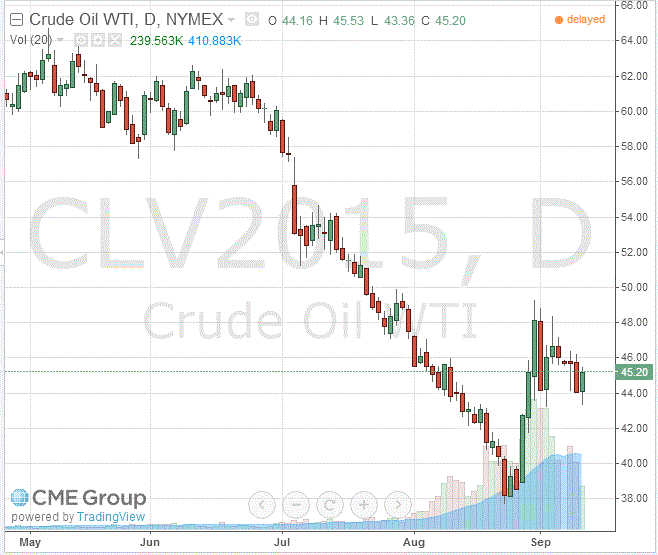- Oil prices increase more than 2.5%
Market news
Oil prices increase more than 2.5%
Oil prices rose on the U.S. initial jobless claims data. The number of initial jobless claims in the week ending September 05 in the U.S. declined by 6,000 to 275,000 from 281,000 in the previous week, in line with expectations. The previous week's figure was revised down from 282,000.
Gains were limited by U.S. oil inventories data. The U.S. Energy Information Administration (EIA) released its crude oil inventories data on Thursday. U.S. crude inventories climbed by 2.57 million barrels to 458.0 million in the week to September 4. It was the biggest one-week increase since April.
Analysts had expected U.S. crude oil inventories to rise by 200,000 barrels.
Gasoline inventories increased by 384,000 barrels, according to the EIA.
Crude stocks at the Cushing, Oklahoma, declined by 897,000 barrels.
U.S. crude oil imports fell by 396,000 barrels per day.
Refineries in the U.S. were running at 90.9% of capacity, down from 92.8% the previous week.
Earlier, the weak economic data from China and Japan weighed on oil prices. The Chinese producer price index (PPI) dropped 5.9% in August, missing forecasts of a 5.5% fall, after a 5.4% decline in July. It was the biggest decline since 2009.
Core machine orders in Japan dropped 3.6% in August, missing expectations for a 3.7% rise, after a 7.9% decline in July.
On a yearly basis, core machine orders in Japan rose 2.8% in August, missing forecasts of a 10.5% gain, after a 16.6% rise in July.
Saudi Arabia said on Thursday that there is no need to hold an OPEC summit, according to sources familiar with the matter. The sources said that Saudi Arabia believes that it is better not to interfere in the market.
WTI crude oil for October delivery increased to $45.20 a barrel on the New York Mercantile Exchange.
Brent crude oil for October rose to $48.67 a barrel on ICE Futures Europe.
